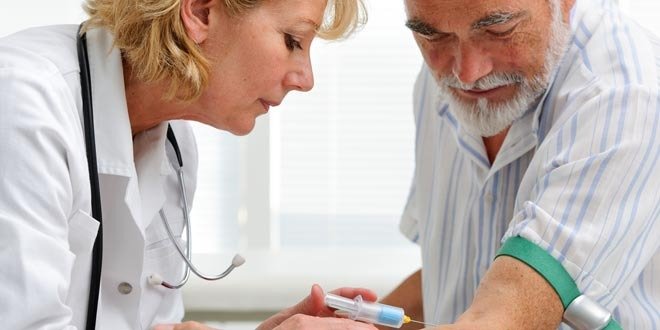
You may be experiencing symptoms that lead you to question whether you may have diabetes. Perhaps you are at an age (over 40 years) where screening for diabetes is recommended. Whatever the reason, diabetes can be diagnosed in a number of ways. In fact, there are 4 different tests that can be done to diagnose diabetes, as recommended by the Diabetes Canada clinical practice guidelines. We’ll review them here.
1. Fasting blood glucose level. This is a simple blood test. Your healthcare team will draw a sample of your blood and send it to a laboratory for analysis. A blood glucose level that is 7.0 mmol/L or higher means that a person has diabetes.
2. A1C. This test also involves analyzing a sample of your blood in a laboratory. A1C is measured as a percentage, so an A1C level of 6.5% or higher means that a person has diabetes. (For more information about A1C, click here.)
3. Oral glucose tolerance test (OGTT). This test measures your body’s ability to use a type of sugar – called glucose – which is the body’s main source of energy. The OGTT test is usually done in the morning, and you will be asked to fast (not eat anything) the night before. A blood sample will be taken when you arrive: this is your fasting blood glucose value and provides a basis for comparing other glucose values.
After your blood is drawn, you will be asked to drink a liquid containing 75 grams of glucose. Because it is very sweet – and rather unpleasant tasting! – it is best to drink the liquid quickly. After two hours have passed, your healthcare team will draw your blood once again, and both blood glucose results will be analyzed in a laboratory. A blood glucose level of 11.1 mmol/L or higher two hours after you’ve consumed the sweet drink means that a person has diabetes.
For gestational diabetes, the diagnosis – according to the Diabetes Canada guidelines – is slightly different than type 1 or type 2 diabetes diagnoses. Women who are being tested for gestational diabetes have a 50-gram OGTT (instead of the 75-gram test), and their blood glucose is measured one hour later. If the woman has a blood glucose level of11.1 mmol/L or higher at that time, it means she has gestational diabetes.
4. Random blood glucose test. If your healthcare team suspects you may be at high risk for diabetes, they may draw your blood to be tested when you visit them, regardless of whether you have been fasting or have eaten recently. If the laboratory test confirms a blood glucose level of 11.1 mmol/L or higher, it means that a person has diabetes.
While it’s impossible to predict whether and when a person will develop type 1 diabetes, the risk factors for type 2 diabetes are very clear: being overweight, being over 40 years of age, having a sedentary lifestyle (not getting much physical activity), and having a close family history (for example, if your mother or father has diabetes). If you think you might be at risk for diabetes, visit your healthcare team to be tested.
As well, if you think you might be experiencing symptoms of diabetes, visit your healthcare team to discuss the matter further. For information about the symptoms of type 1 diabetes, click here. For information about type 2 diabetes symptoms, click here.


